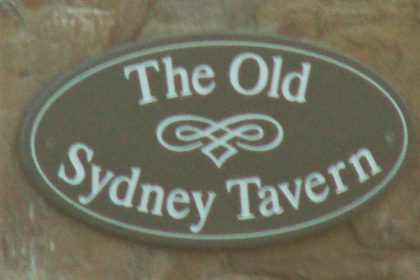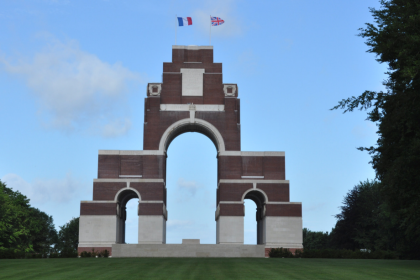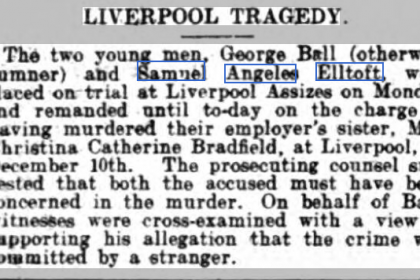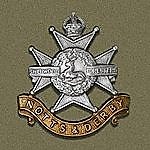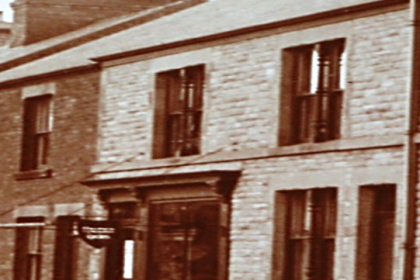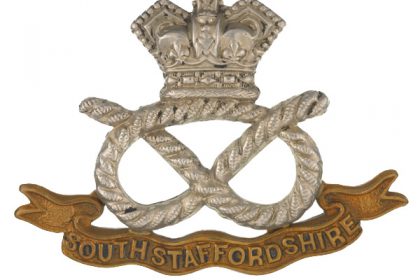A TALK GIVEN TO MOSBOROUGH HISTORY MEETING GROUP
BY DAVE DARWIN ABOUT HIS CHILD HOOD IN MOSBOROUGH
When Dave lived at Mosbro, he lived near farms and spent a lot of time on them. He was always working on the land, but when we moved to Eckington away from all my farming friends. I got steam in my blood and I wanted to be a train driver. I left school in December 1954 and started at Barrow Hill Shed in January 1955. On the long road to achieving my ambition until I retired in 2004 and became a volunteer driver where it all started back at Barrow Hill Roundhouse where I still do my bit 3 or 4 days a week.
My memories of my child hood were a very happy one that I had in Mosbro when it was a village near Sheffield. Such memories I have of these are off day I have, before circumstances moved us over the River Moss to Eckington. To me approaching 11yrs old. This was the start of a new life but for my parents it was heaven leaving our old cottage up Plumbley Lane (No 5) with no mains services of any description. To go into a brand-new Council House. I can now understand my parents joy. Light at click of a switch, not having to fill and trim paraffin lamps, cooking by gas and not on a coal fired range or a smelly paraffin stove. Hot and Cold water on tap and a bath. Previously we had to fetch water from a tap at the bottom of the lane, and the bath was hung on the wall until required. A flushing toilet inside was another luxury at No 5 the toilet or Midden was 50 yards down the garden.
I was born on the 24th September 1939 just before the war broke out. Living at 32 School Street Mosbro in a farm cottage adjoining Maurice Peats Farm. My earliest memories of the war are being my father saying its ok its on of ours meaning the (planes) and of going under the staircase in a small paltry when the air raids warning signal went and ha from the bomb damage. One night the house shook, and I remember my mum saying, “that’s was close”. Next morning, we walked down Station Road to Halfway and on the Holbrook and up Cow Lane. Jerry had dropped a 50lb bomb trying to destroy the complex of junctions on the railway at Killamarsh Junction. Fortunately, they missed, people were collecting shrapnel from the bomb.
Going into town (Sheffield we always called it town) or City. Seeing the bomb crates down City Road from the upstairs of the bus (we always went upstairs for my father to smoke his pipe) but I was too young to understand.
Before the war ended we had to move out of Maurice Peats Cottage as he wanted it for a farm labourer. My father not working on the farm, he was employed at Thomas Staniforth Sevenquick Tools at Hackenthorpe. He was Military Service exempt through being a steelworker (Edge Tool Forger). We moved to No. 5 Plumbley Lane. I was about 4 years old and beginning to understand more.
One day the horror of the war was brought home to me. I was outside No.5 playing when coming up the lane was a pony and flat cart. I dashed inside and fetched mother, “look what’s coming up the lane” I said. Sure enough on the back of the cart were 2 girls and a boy similar age to me. The father was leading the horse with his wife walking beside him.
Mother said, “Hello where are you bound”?
Is No. 8 Plumbley Lane up here?
“Just up there” said mother, where have you come from.
We were bombed out in Sheffield and told to come here. Mother made them a pot of tea and we became good friends. This brought the horror of war home to me.
There were other families that moved out of the City to Mosbro.
THE WINTER OF 1947
The war had finished in 1945, I was now settled in at Mosbro School on School Street, a fair walk from Plumbley Lane.,
The snow started at the beginning of March after a bitter cold January and February. Too cold to snow my mother would say our water supply at the bottom of the lane was frozen up where we fetched it from in a tank on wheels. So, we had to use the water out of the large tank filled with rainwater from the roof which of course had to be boiled first, and the only means of cooking and heating was by a coal fire, and a smelly paraffin stove lighting was also by paraffin lamps and candles. Paraffin was getting scarce which had to be fetched from Len Brunt’s hardware shop at the Corner of Station Road. This is where the accumulators for our wireless were charged (we didn’t call it a Radio). Coal was also in short supply our coal man Mr Plant at the bottom of the lane just could not get any. I spent hours scouring the hedgerows for wood to burn old hedge stakes dead branches anything to keep us warm.
When the wind changed to a westerly direction along came the snow great big flakes and it came for days on end. Ever thicker even deeper went the poem which my mother could recite remembered from her school days at Hackenthorpe. The lane became blocked with the snow drifting in off the fields. It was easier to walk down the field than the lane.
With the toilet being 50 yards down the garden path, my father piled the snow up high to make the path passable, it was like walking through a wind tunnel. It was the midden type of toilet (known as the bog) emptied by the Council and disinfected by Jeys Fluid. Because of the snow they could not get but father being a gardener had a use for that. He moved some snow and dug a trench, we had some great cauliflowers that summer!
Down in the village snow was piled high everywhere and had to be moved it was carted to Blenkinsop’s field behind the farm house and was still lying around in June.
We used to go and look for coins where it had been tipped, finding the odd penny. I went to school one Monday morning walking down the field adjoining the blocked lane, onto Chapel Street, Cadman Street through the Church yard into School Street. It was so quiet not a soul about, the school yard was like a white desert no footprints anywhere. I turned around and went back home and mad an igloo!
THE FARMS
Mosbro to my memory had at least 7 or 8 farms.
Woolley’s Plumbley Hall Farm this was the largest and most up to date, with milking machines and bottling plant. 2 or 3 tractors, a Fordson Major and a Field Marshall was used for a while, a strange sounding machine to my ears.
Just down the lane was Rhodes farm and standing back from the lane was a small farm owned by a Mr Plumtree whose son was an RAF pilot and sometimes would fly over probably dropping his father a food parcel/or his washing. He was badly burned on his face. At the bottom of the lane was Mr Blenkinsop’s farm helped his son Joe a strapping fellow winning many sheaf tossing competitions at local shows.
The first motor car I went in was owned by them an early Ford. They took me to a farm dispersal sale at Coal Aston, calling at Staveley on the way back to Kays Garage to fill up with petrol, (as there was no Garage in Mosbro). Leah’s Taxis had sold it.
Across the way was Dawes farm. I think there was another Dawes farm up South Street.
At the top of Hollow Lane was Walkers Farm and down South Street near to its junction with Gashouse Lane was Colin Peat’s Farm, he was very successful at shows with cattle, (especially Jersey Cows).
Maurice Peat had a farm on School Street. The local contract farmer was Plants going around all the farms with his threshing machine hauled by a steam traction engine. The Blacksmith was situated opposite the end of Duke Street on the main road. Still shoeing shire horses and other working horses in the 1950’s but mostly repairing farm machinery.
Mr Plant had a haulage and coal delivery service based at the bottom of Plumbley Lane. When we moved from Mosbro to Eckington, he was our removal man loading our belongings, furniture onto a flat bed lorry and putting a cover over it.
HOUSES
The two grand houses in Mosbro were of course Mosborough Hall and Eckington Hall, both at the top of the hill from Eckington. The local colliery owners Wells lived at Eckington Hall, there was a footpath beside the wall of the hall which runs from Eckington Hill to South Street, known as “THE PINGLE” which is still there today (February 2018). The Spafford’s lived at Mosbro Hall, Mrs Spafford had a lot to do with the WI of which my mother was a member. The family was part of the Tarpaulin and Tent Makers (Mudfords) business in Sheffield, hiring out Marquees etc.
My grandparents on my father’s side lived at 22 Station Road. Once the home of the Drabble family, they moved to Beighton and Grandfather who also worked at Staniforths Severquick Tools Hackenthorpe rented the house (see Rent Agreement). It was a large and grand house with a very large garden and orchard. Four Bedrooms and 2 attics with 2 staircases leading to them plus a bathroom with hot, and cold water. The kitchen was very large with a large stone sink, copper boiler, pantry and a lovely coal fired range. In the living room servant’s bells were still on the wall, this must have been the servant’s quarters. A passage way lead to two front rooms overlooking the garden which was very attractive. (photo) Off the passage way was a door leading to a large cellar.
Adjoining the house on the road side was the garage which at one time must have been a stable as hay racks and loft could be still seen and old carriage lamps were still lying around. In the large cobbled yard was a mounting block for Horse Riders also in the yard were two wells, one supplied the house before being mains connected. The lighting though was by gas, electric was being put in in the late 1950’s. A grand house still standing today, Now number 32. David remembered just up the road from 22 Station Road was Scrappy Walkers Scrap yard and a croft which my grandfather rented from Drabbles. He kept hens on it – North Notts Farmers collecting the eggs and delivering the feed for them.
Turners Ice Cream Factory Award Winning Ice Cream.
Most of the shops and business were on High Street known as “The Front”, there was Hardy’s Barbers, Wetton’s Wood Yard, Leah’s Taxis and Motor repairs, Staton’s Newsagents and the School House next to the Church. The house at the top of School Street on the corner of High Street, known as The Salt Box.
I used to have to go to Sunday School at the Glynn Vivien Mission at the top of Queen Street but would rather have played cricket or football.
The small colliery drift mine up Mosbro Moor near the Fitzwilliam pub, also further on down Swallows Hill passing another grand house before coming to Diamond Row, so called because of the Diamond shaped windows and chimneys. A bit further on from this where the Garden Centre is now was Dent Main Colliery. I also remember two more drift coal mines in Eckington Woods, one was at the bottom of Gashouse Lane from Mosbro.
An old Scythe and Sickle works once stood on the land adjoining the Ford Dam, also on High Lane Ridgeway stood Hutton’s The Phoenix Works but I don’t remember a Scythe and Sickle works in Mosbro. Staniforth’s Severquick works in Hackenthorpe was the last to close, in my father’s and grandfather time the Managing Director was a Mr Carter survived by his son Allan, a prominent JP in Chesterfield. When the works closed it was part of Tyack’s and Spear and Jacksons.
TRANSPORT – BUSES
Mosbro always had a good bus service Sheffield Corporation providing Service 30 Eckington, Sheffield and I think Service 26 to killamarsh and Sheffield. East Midland Service No 3. Mansfield – Sheffield was on an hourly service. Another service was operated by Beauchief Coach’s (Oggs Buses) running from Sheffield via Mosbro – Killamarsh to Harthill and beyond. Coming from Town (Sheffield) the conductor would call out the names of the fare stages, there were Birley, Four Lane Ends, Diamond Row, Fitzwilliam, Crown Corner. The buses ran to time you could set your watch by them.
Booth and Fisher was another operator from Holbrook (Halfway), they ran the work men bus service to the local colliery’s and would also do school trips and take us to away football matches such as Frechville, Killamarsh, Whitwell, Staveley (always a strong football team). The buses were the Bedford OB now a classic.
TRAIN STATION
Station Road was a bit misleading although it did take you to a station it was a fair old walk down through Halfway, Holbrook and Killamarsh West. It was the LMS line between Chesterfield and Rotherham. The last services here call in the mid 50’s with a Chesterfield – Sheffield service.
During the war years excursion trains would sometimes be run.
I remember on one occasion we went on a train to Skegness, my father saying “the sea will be a long way out” but all I remember was the beach covered in barbed wire, ready for any invasion. I never went to Skeggy again until 1998 when as a train driver I went with a special train”, THE BARBED WIRE HAD GONE!
NB: Since writing these notes and coming to speak to the Mosborough History Meeting Group I have had the pleasure of meeting Linda and Robin who now live in No 32 Station Road Mosborough, my grandfather’s home from 1936 until his death in 1975, and for showing me around the house and garden were as a child I spent many happy hours. Thank you.
David Darwin.
Credit to David Darwin, typed up by Linda Staton. 2018


